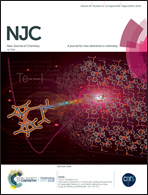Low temperature-induced homogeneous liquid–liquid extraction and ternary deep eutectic solvent-based dispersive liquid–liquid microextraction followed by gas chromatography in the assessment of multiclass pesticide residues in cucumbers
Abstract
Herein, an efficient and simple sample pretreatment method based on a combination of low temperature-induced homogeneous liquid–liquid extraction and ternary deep eutectic solvent-based dispersive liquid–liquid microextraction has been proposed for the extraction of multiclass pesticides in cucumber samples before their determination with gas chromatography-flame ionization detection. In this study, acetonitrile is added to a tube containing crushed cucumber sample (scum and juice) and the mixture is agitated manually. Acetonitrile and juice of the sample form a homogeneous solution. Then the mixture is cooled using liquid nitrogen for a few seconds. By this action, the aqueous phase is freezed and the analytes are extracted into liquid acetonitrile phase collected on the freezed aqueous phase. The obtained acetonitrile phase is mixed with the synthesized ternary deep eutectic solvent produced from choline chloride, acetic acid, and 4-chlorophenol (as an extraction solvent) and rapidly injected into deionized water placed into a conical bottom test tube. Consequentially, a cloudy state is formed and the tiny droplets of the extractant containing the extracted analytes are sedimented at the bottom of the tube after centrifugation. A fraction of the sedimented phase is removed with a microsyringe and injected into the separation system for analysis. Under the optimum conditions, enrichment factors and extraction recoveries were in the ranges of 290–405 and 58–81%, respectively. The limits of detection and quantification were in the ranges of 0.42–0.88 and 1.5–2.9 ng g−1, respectively. The method precision, expressed as relative standard deviation, was ≤7.8% for intra- (n = 6) and inter-day (n = 4). The proposed method was successfully applied to the analysis of the selected pesticides in various cucumber samples and chlorpyrifos was determined in three samples at a ng g−1 level.



 Please wait while we load your content...
Please wait while we load your content...